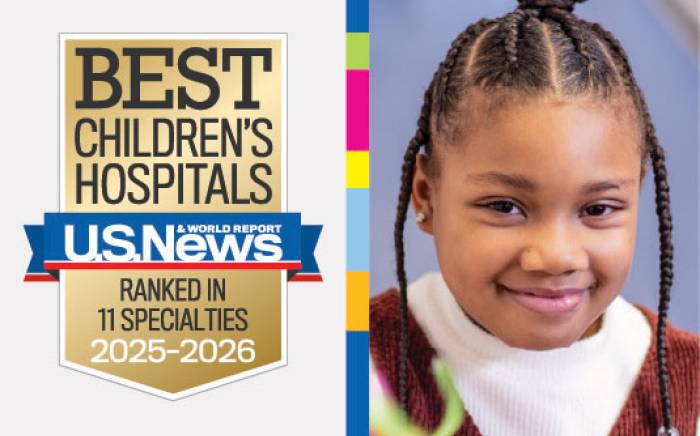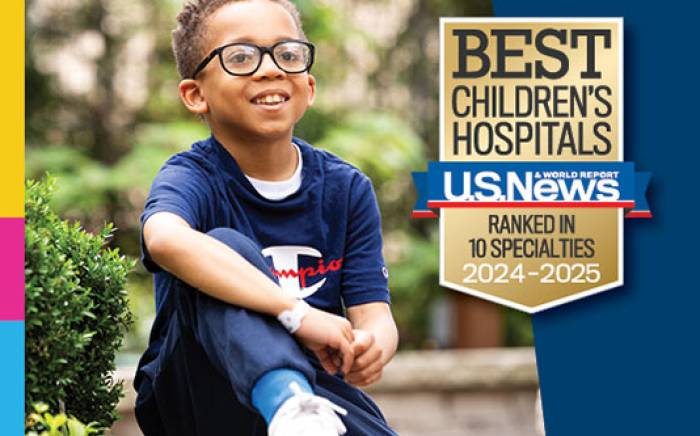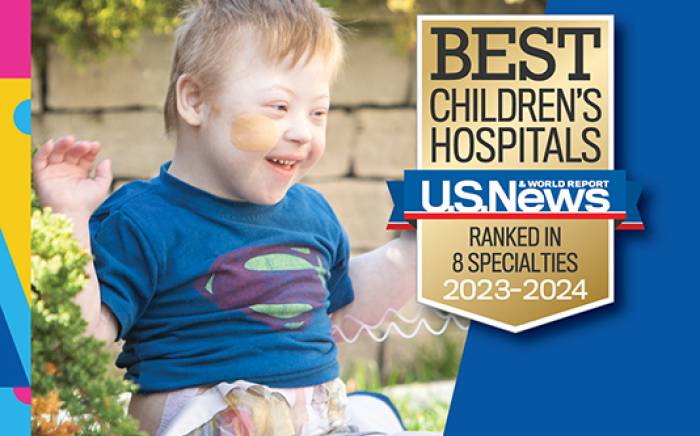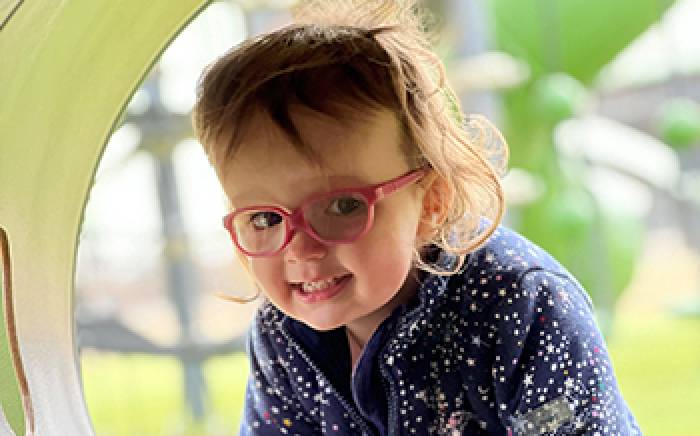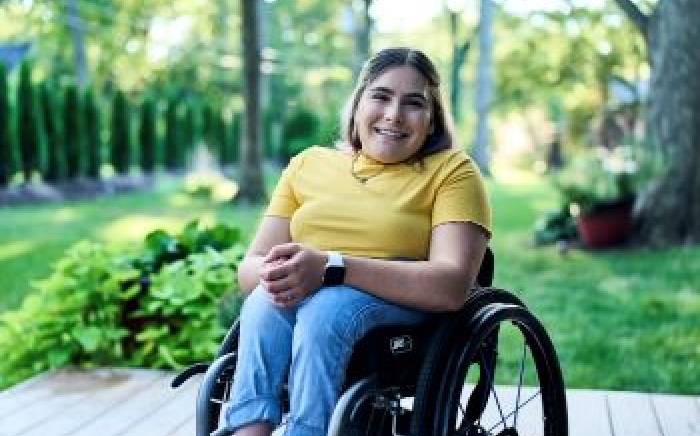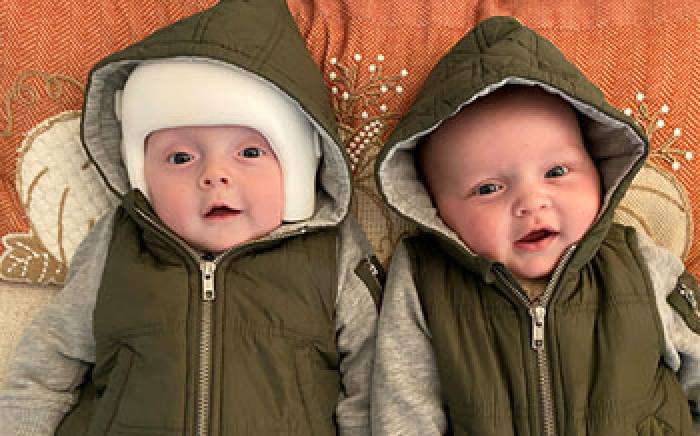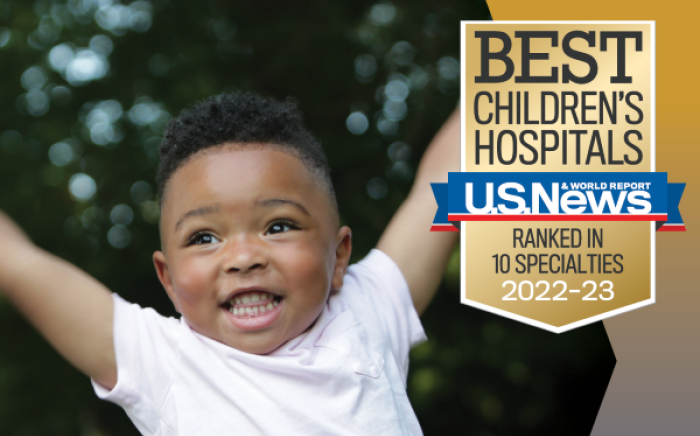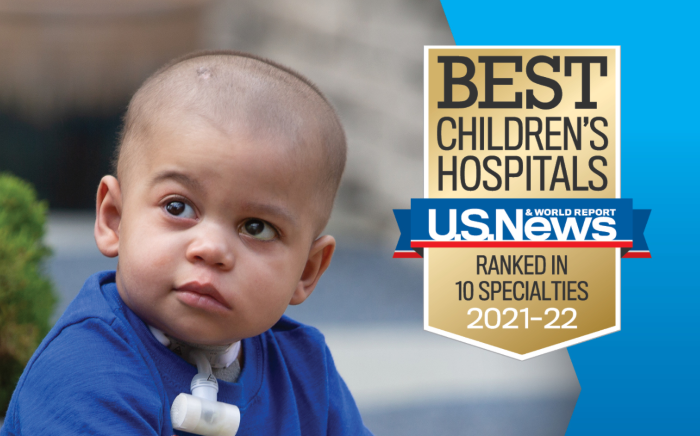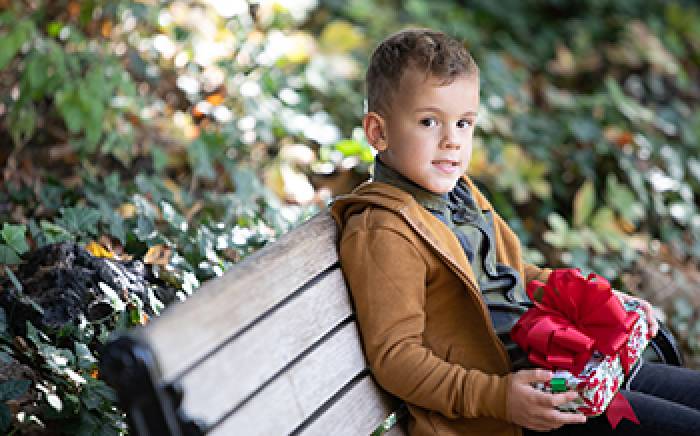
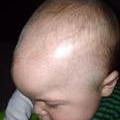 When Wyatt Heilman was 4 months old, he was diagnosed with craniosynostosis, a condition that occurs when one or more joints between the bone plates of the skull fuse together. Trying to find the best treatment for Wyatt led his Michigan family to travel miles from home to St. Louis Children’s Hospital.
When Wyatt Heilman was 4 months old, he was diagnosed with craniosynostosis, a condition that occurs when one or more joints between the bone plates of the skull fuse together. Trying to find the best treatment for Wyatt led his Michigan family to travel miles from home to St. Louis Children’s Hospital.
Wyatt’s pediatrician first noticed a ridge on his forehead during the baby’s two-month wellness check. It was something his mom, Erin, had also noticed but hadn’t given much thought to at first.
“The doctor recommended Wyatt have x-rays taken, and we were told nothing was found at that time,” Erin recalls. “But a month later, our pediatrician was surprised by the x-ray results and sent us immediately to a specialist.”
That’s when Erin and her husband, Lance, learned their baby had a form of craniosynostosis that would require repair that is ideally done at an early age.
The surgeons at their local children’s hospital in Michigan recommended cranial vault surgery or an open treatment. The open treatment includes a surgery, which often takes more than five hours, and requires a blood transfusion and an extended hospital stay with an overnight stay in the pediatric intensive care unit.
Erin says the idea of her son having any type of surgery made her very nervous.
“I decided to make myself an expert and I started Googling everything about craniosynostosis and prepared myself for the worst,” she says. “I kept reading about a procedure being done at St. Louis Children’s Hospital called endoscopic craniosynostosis, where the surgery only took 1.5 hours, most patients don’t need blood transfusions, they usually go home the next day and their recovery meant wearing a molding helmet until they were 1, which was OK.
“I thought it sounded too good to be true, but my husband said to call, and because Wyatt was already 4 months old, they wanted to get him in soon.”
Several weeks later, the Heilmans drove nine hours from home for their first visit to St. Louis Children’s Hospital, where they met Wyatt’s surgical team, Dr. Matthew Smyth, a pediatric neurosurgeon, and his colleague Dr. Kamlesh Patel, a pediatric plastic surgeon. The close collaboration between neurosurgery and plastic and reconstructive surgery has led to more than 200 successful endoscopic craniosynostosis repairs at St. Louis Children’s Hospital since they began in 2006.
Using a team approach to the procedure, Drs. Smyth and Patel use an endoscope through one or two small incisions measuring about one inch at the top of the head. They remove a segment of bone near the fused bones, which releases the fusion. Instead of plating or reshaping the skull, the child wears a custom-made molding helmet beginning the first week after surgery up until his first birthday.
“Wyatt did well, and everything was very routine. His actual surgery took about 45 minutes, and he was done in about 1.5 hours,” Dr. Smyth says. “His blood loss was less than average, he didn’t have much swelling and he was discharged the next day.”
Dr. Smyth says endoscopic repair is usually a good choice for children less than 5 months old because it is less invasive than an open treatment. Parents often prefer it.
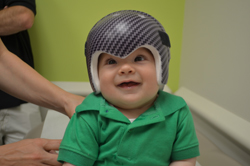 Both Drs. Smyth and Patel agree that what has led to such success at St. Louis Children’s Hospital with the endoscopic procedure is the team approach between the surgeons (plastic surgery and neurosurgery) and specially trained cranial orthotists, who build the custom helmets. Successful outcome is dependent on the quality of the molding helmet therapy.
Both Drs. Smyth and Patel agree that what has led to such success at St. Louis Children’s Hospital with the endoscopic procedure is the team approach between the surgeons (plastic surgery and neurosurgery) and specially trained cranial orthotists, who build the custom helmets. Successful outcome is dependent on the quality of the molding helmet therapy.
“We know that when we work together, we have better outcomes,” Dr. Patel says. “We also know that the less operating we have to do, the better it is for the child.”
Wyatt been home from the hospital for several weeks and is already wearing his molding helmet 23 hours a day.
“We didn’t waste any time having Wyatt wear his helmet,” Erin says. “Dr. Patel told us the first four weeks are the most important in molding his head and then the helmet helps keep its shape.”
Wyatt will continue to see Dr. Patel to ensure his head is shaping properly with the helmet, and then return through his teen years for observation.
In fact, he has already had his first follow-up appointment and, because of the success of the procedure, may not require another visit until he is 1 year old.
“We were very happy with St. Louis Children’s Hospital. Everything went great,” Erin says. “The doctors, nurses and everybody at the hospital were wonderful. I am just so happy we found the hospital and Dr. Smyth and Dr. Patel.”

